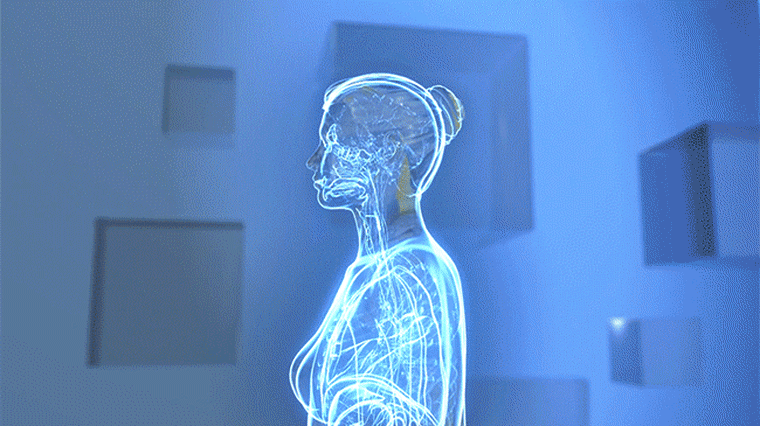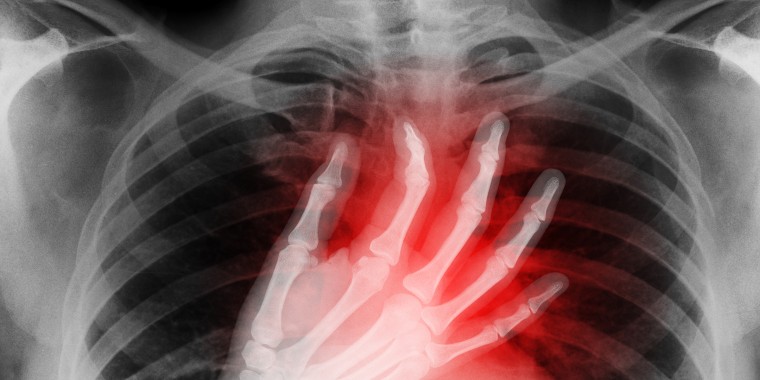In times of extreme unexpected stress, a person’s heart can change shape, causing chest pain and other symptoms of a heart attack but without clogged arteries.
It’s called takotsubo cardiomyopathy or broken heart syndrome — because it can happen in times of grief after a loved one recently died — and the vast majority of patients are women.
Cases are on the rise in the U.S., especially among middle-aged women, with the most “prominent at-risk group” consisting of those 50 to 74 years old, research published last month in the Journal of the American Heart Association found.
There were 135,463 documented cases of the syndrome in the U.S. between 2006 and 2017, with the annual incidence increasing steadily in both sexes.
But for every additional diagnosis in younger women or men of all ages, there were 10 additional cases involving middle-aged women.
“There is something potentially going on around the perimenopausal period such that just beyond 50 and up until age 74, there's this window of opportunity for the condition to develop in women,” Dr. Susan Cheng, senior author of the study and director of public health research at Cedars-Sinai’s Smidt Heart Institute in Los Angeles, told TODAY.
“Their heart is vulnerable.”
The exact reasons aren’t known yet, but cardiologists have some theories.
Women made up 88% of all cases of takotsubo cardiomyopathy in the most recent analysis. There's something about female biology that puts women more at risk, leading to theories about sex hormones playing a role, but that’s not the whole story because it’s more about the stress hormones, Cheng said.

It's clear there’s a brain-heart connection when you look at broken heart syndrome, she noted. Risk factors like high cholesterol, smoking and high blood pressure create the setup for developing heart disease, but what actually triggers a cardiac event? Takotsubo cardiomyopathy shows it can be stress — emotional, physical or environmental — that perturbs the brain-heart access, she noted.
Going through grief, a new diagnosis of cancer, divorce, job loss, surgery, car accident or severe pain can lead to the condition.
In broken heart syndrome, the fight-or-flight stress hormones surge out of proportion to the situation, while at the same time, the sensitivity to that spike is particularly profound in the affected patients, impacting the heart muscle and the heart cells, Cheng said.
Up until the new data, researchers thought the oldest people would be the most vulnerable to takotsubo cardiomyopathy. Instead, the incidence was “particularly rapidly rising” in women 50 to 74 years old.
It may be because these women have lived long enough to accumulate life stresses and heart disease risks such as high cholesterol, but are still young enough to experience an extreme response to stress — a reaction that gets blunted as people reach their 80s, Cheng said.
“We think it's a combination of being older but not too old, such that the heart is vulnerable and yet the potential for the stress-provoked immune, inflammatory and hormonal activation system to be really revved up — and revved up too much — is still there,” she noted.
In takotsubo cardiomyopathy, tests show ballooning and unusual movement of the lower left heart chamber, but no signs of heart damage or blockages in the coronary arteries, according to the American Heart Association.
The most common warning signs are chest pain and shortness of breath, but recovery time is quicker than after a heart attack.
The condition is named after a Japanese word for “octopus pot” because of the distinctive way the heart changes shape.
Imaging that shows pictures of the moving heart — such as an echocardiogram — is a key part of making the diagnosis. The syndrome used to be “easy to miss and hard to recognize,” but there’s increasing awareness of it now when patients complain of symptoms, Cheng said.
The treatment is to remove the source of stress, if that’s possible, and support cardiac function with beta blockers, a class of medications that block stress hormones from affecting the heart.
Cases of broken heart syndrome have been on the rise since the pandemic began, other research has found. It’s not a health hazard from the virus itself, but rather the stresses of the crisis, the authors noted.
Cheng agreed, urging everyone, especially women, to seek out all possible support and stress management to cope with their particular sources of anxiety.
“The stress of regular life even outside of the pandemic affects our bodies in so many different ways that we have yet to fully understand,” she said. "But we know it happens."



